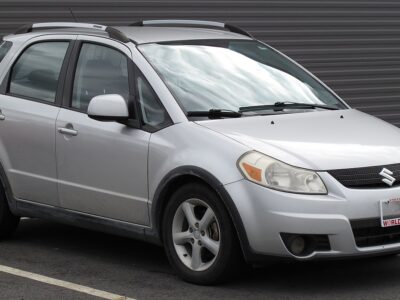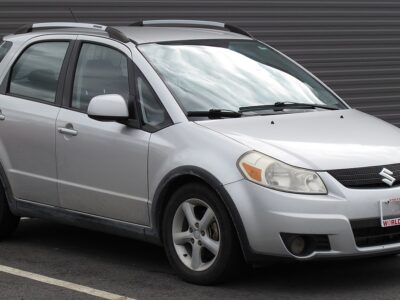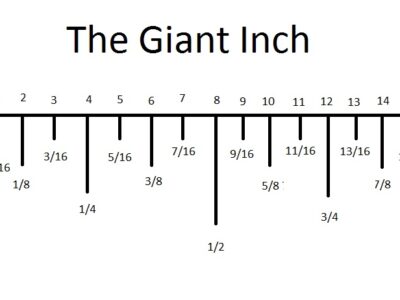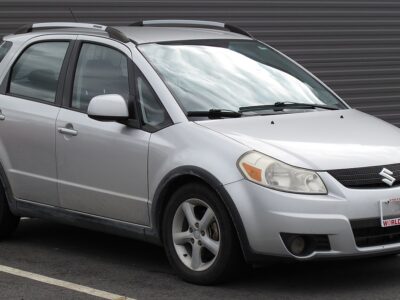
2011 Toyota Camry Clutch Replacement: A Comprehensive Guide to Fixing Your Ride

If you're a Toyota Camry owner, particularly of the 2011 model, you've probably enjoyed the smooth drive and impressive reliability of this classic sedan. But, like every vehicle, the Camry is not invincible, and sometimes, problems like clutch wear can arise. If you're experiencing issues like difficulty shifting gears or a slipping clutch, it might be time for a clutch replacement. But don’t worry—we’ve got you covered with this step-by-step guide on how to replace the clutch in your 2011 Toyota Camry.
- Why Is Clutch Replacement Important?
- Signs You Need a Clutch Replacement
- How Much Does It Cost to Replace a Clutch in a 2011 Toyota Camry?
- Tools You’ll Need for Clutch Replacement
- Step-by-Step Guide to Replacing the Clutch in Your 2011 Toyota Camry
- Common Mistakes to Avoid During Clutch Replacement
- When to Seek Professional Help
- Conclusion
- FAQs
Why Is Clutch Replacement Important?
The clutch in your 2011 Toyota Camry plays a crucial role in your vehicle's performance. It connects and disconnects the engine's power to the transmission, allowing you to change gears smoothly. A worn-out clutch can lead to sluggish performance, difficulty shifting, or even complete transmission failure. Getting it replaced at the right time ensures your car continues running smoothly, giving you both peace of mind and a more enjoyable driving experience.
Signs You Need a Clutch Replacement
Before we jump into the actual replacement process, let’s first cover some signs that your clutch is on its way out. Here’s what to look for:
- Slipping Clutch: If your RPMs shoot up without a corresponding increase in speed, it’s a sign the clutch isn’t fully engaging.
- Difficulty Shifting Gears: Stiff or jerky shifting could mean the clutch is not disengaging properly.
- Grinding Noise: If you hear grinding sounds when you try to shift gears, it’s a clear indication of clutch issues.
- Soft or Spongy Pedal: A clutch pedal that feels unusually soft or spongy may be a symptom of a worn-out clutch.
How Much Does It Cost to Replace a Clutch in a 2011 Toyota Camry?
When it comes to replacing a clutch, the price can vary depending on whether you choose to do the job yourself or have a professional mechanic handle it. On average, a clutch replacement for a 2011 Toyota Camry can cost anywhere between $800 to $1,500. Here’s a breakdown of costs:
- Parts: The clutch kit itself typically costs between $200 and $400.
- Labor: Labor charges can range from $500 to $1,000, depending on where you live and the complexity of the job.
Though it might seem like a hefty expense, keeping your clutch in top shape can save you from far more expensive transmission repairs down the road.
Tools You’ll Need for Clutch Replacement
If you’re brave enough to tackle the job yourself (and we encourage you to do so if you’ve got the skills), here are some tools you’ll need:
- Car Jack and Jack Stands
- Socket Wrench Set
- Clutch Alignment Tool
- Torque Wrench
- Transmission Jack
- Screwdrivers and Pliers
- Flywheel Locking Tool (optional, but recommended for safety)
Make sure to have these tools on hand before you get started to avoid interruptions mid-project.
Step-by-Step Guide to Replacing the Clutch in Your 2011 Toyota Camry
Step 1: Safety First
Before starting the replacement process, ensure your car is parked on a flat, level surface. Engage the parking brake and wear safety gear like gloves and goggles. You’re dealing with a heavy, complicated mechanical process, so don’t skip these precautions.
You may be interested in reading 2002 Toyota Camry Clutch Replacement: Everything You Need to Know
2002 Toyota Camry Clutch Replacement: Everything You Need to KnowStep 2: Lift the Vehicle
Use the car jack to lift your Camry and place it securely on jack stands. The more space you have beneath the car, the better. It’s also advisable to disconnect the battery before you begin working on the vehicle to avoid any electrical mishaps.
Step 3: Remove the Transmission
The clutch is located inside the bell housing, which is part of the transmission. To get to it, you’ll need to remove the transmission from the engine. This involves:
- Removing any components obstructing the transmission, such as the exhaust pipe or driveshaft.
- Disconnecting the transmission from the engine using a socket wrench.
- Using a transmission jack to carefully lower the transmission from the engine.
This step is one of the more complicated and time-consuming parts of the process.
Step 4: Remove the Old Clutch
Once the transmission is removed, you’ll have access to the clutch assembly. Carefully remove the pressure plate bolts and the clutch disc. Inspect the flywheel for any damage or excessive wear while you’re at it. If necessary, have it resurfaced or replaced.
Step 5: Install the New Clutch
Now that the old clutch is out, it’s time to install the new one. Here’s how:
- Align the new clutch disc on the flywheel using a clutch alignment tool.
- Place the pressure plate over the clutch disc and bolt it in place. Be sure to torque the bolts to the manufacturer’s specifications.
Step 6: Reinstall the Transmission
With the new clutch in place, carefully lift the transmission back into position using the transmission jack. Bolt the transmission back into place, ensuring everything is aligned properly.
Step 7: Test the Clutch Pedal
Before you finalize everything, press the clutch pedal a few times to ensure it feels firm and responsive. If the pedal feels soft or spongy, you may need to adjust the clutch hydraulic system or check the slave cylinder for leaks.
Step 8: Reassemble and Test Drive
Reinstall any components you removed to access the clutch, such as the driveshaft, exhaust pipe, and any electrical connections. Once everything is back in place, lower the car from the jack stands, reconnect the battery, and take it for a test drive.
You may be interested in reading 2002 Toyota Camry Clutch Replacement: Everything You Need to Know
2002 Toyota Camry Clutch Replacement: Everything You Need to Know 1999 Toyota Camry Clutch Replacement: A Complete Guide to Getting Your Ride Back on Track
1999 Toyota Camry Clutch Replacement: A Complete Guide to Getting Your Ride Back on TrackCommon Mistakes to Avoid During Clutch Replacement
Replacing a clutch is no small feat, and it’s easy to make a mistake. Here are a few things you’ll want to keep in mind:
- Incorrect Torque Specifications: Make sure you torque all bolts to the manufacturer’s specifications. Over-tightening or under-tightening can cause serious problems.
- Forgetting to Check the Flywheel: A worn-out flywheel can cause the new clutch to fail prematurely. Always inspect it carefully.
- Ignoring Fluid Leaks: Clutch issues can sometimes be linked to leaks in the hydraulic system. Check for leaks before completing the job.
When to Seek Professional Help
While replacing the clutch in your 2011 Toyota Camry can be done as a DIY project, it’s a complex procedure that requires precision and knowledge. If you’re not confident in your mechanical skills, it’s best to leave it to a professional mechanic. They have the experience and equipment needed to get the job done right.
Conclusion
Replacing the clutch in your 2011 Toyota Camry can be a challenging yet rewarding experience. By following this comprehensive guide, you can ensure that your clutch replacement is done correctly, saving you time and money while restoring your vehicle’s performance. Remember, regular maintenance and timely repairs are key to extending the life of your car and keeping it running smoothly.
FAQs
1. How long does it take to replace the clutch in a 2011 Toyota Camry?
On average, a clutch replacement can take anywhere from 6 to 8 hours, depending on your experience level and the tools you have.
2. How do I know if my clutch is bad?
Common signs of a bad clutch include difficulty shifting gears, slipping, grinding noises, and a spongy or soft pedal.
3. Can I drive with a bad clutch?
Driving with a bad clutch can lead to further damage to your transmission. It's best to replace it as soon as possible.
4. Should I replace the flywheel with the clutch?
It’s a good idea to inspect the flywheel during clutch replacement. If it shows signs of wear or damage, replacing it will ensure the new clutch functions properly.
5. Can I replace the clutch myself?
If you have experience with car repairs and the right tools, you can replace the clutch yourself. However, it’s a complex job, so don’t hesitate to seek professional help if needed.
You may be interested in reading 2002 Toyota Camry Clutch Replacement: Everything You Need to Know
2002 Toyota Camry Clutch Replacement: Everything You Need to Know 1999 Toyota Camry Clutch Replacement: A Complete Guide to Getting Your Ride Back on Track
1999 Toyota Camry Clutch Replacement: A Complete Guide to Getting Your Ride Back on Track Toyota Camry Engine Splash Shield Replacement: A Step-by-Step Guide
Toyota Camry Engine Splash Shield Replacement: A Step-by-Step GuideIf you want to know other articles similar to 2011 Toyota Camry Clutch Replacement: A Comprehensive Guide to Fixing Your Ride you can visit the category Service and Parts.
Deja una respuesta




More content of your interest